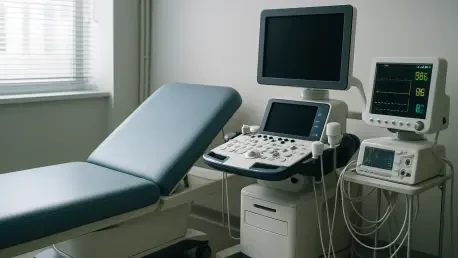The global Femtech sector is empowering women and growing monumentally. Countries around the globe represent digital health, reproductive technology, diagnostics, and women’s personalized wellness. Aging societies and a greater awareness of women’s health problems, along with more use of telehealth solutions, have analysts predicting the global Femtech market to rise to 97.25 billion by 2030. This growth is expected to register a Compound Annual Growth Rate of 16.37% from 2025 to 2030, according to a new report by Grand View Research, Inc. Additionally, as companies pursue access to remaining possibilities of increased patient resources, a variety of funding ecosystems, and advanced research networks, they are able to expand their reach.
This article examines the challenges Femtech companies face when entering international markets and discusses strategies for effectively handling regulations and cultural expectations.
Navigating International Challenges in Femtech Expansion
International growth for this industry is associated with major difficult issues. Regulatory frameworks in different geographic locations vary, reimbursement models are different, and cultural rigor is also a factor in acceptance. Firms would also need to navigate very different investment landscapes with country-specific priorities of local venture capital firms and public funding schemes.
Targeted accelerator programs and structured international support have become the most valued instruments by the firms that manage to scale effectively. With the ability to fill knowledge gaps, these programs serve as an enabling tool to ensure the innovator overcomes all obstacles to exploiting global potential.
Unlocking European Markets Through Strategic Acceleration
Some companies have used the accelerator programs as a stepping stone into entering the European markets with a series of pilot deployments, investor connections, and regulatory advice. Their examples show that the general principles of any company in the world, namely strategic planning, mentorship, and systematic expansion into a new market, are prone to success in international expansion.
European markets, in particular, offer fertile ground for growth due to mature healthcare systems, strong venture capital ecosystems, and government-backed innovation initiatives. For example, Toronto-based femtech startup Hyivy Health participated in an accelerator that supported its entry into the United Kingdom market. The accelerator provided introductions to local clinicians and hospital networks while also helping navigate regulatory pathways. Without such backing, the process of entering a highly regulated healthcare environment would have been slower and riskier.
Across the pond, startups entering the United Kingdom and France have benefited from structured introductions to hospitals, investors, and regulators, allowing them to test products, refine go-to-market strategies, and reduce time-to-market. These programs also provide virtual and in-market sessions to build cultural and operational knowledge, helping companies tailor solutions to meet local needs.
Finally, international innovators, from the U.S., Israel, and Scandinavia, are increasingly using similar frameworks to penetrate European markets. Accelerators act as catalysts, enabling companies to expand without the trial-and-error approach that often slows unassisted market entry.
France: An Opportunity for Early Movers
The femtech industry in the United Kingdom is anticipated to achieve a projected revenue of 3,785.3 million USD by the year 2030. The British femtech market is expected to experience a compound annual growth rate of 16.8% from 2025 to 2030. Key influencers include the efforts to improve women’s health through the Women’s Health Strategy, innovation centers across London, Cambridge, and Manchester, and good rates of digital health adoption by clinicians and patients.
Entry into this market presupposes learning about the regulations and the reimbursement market. The Medicines and Healthcare products Regulatory Agency regulates medical devices and digital health authorizations, with the National Institute for Health and Care Excellence framework determining cost-effectiveness and clinical implementation decisions. To ensure products have a path to market while they are being prepared, Accelerator programs offer invaluable advice on navigating these structures to guide international companies through the preparation of a submission and suitability to clinical needs.
Global investment in Femtech reached $2.2 billion in 2024, but it represents just 8.5% of overall digital health funding. Still, it demonstrates high levels of investor confidence. A Canadian digital health company that has been trying to enter the London market made some pilot deployments in large hospital networks. This opportunity came from introductions made during their accelerator training. It shows that helping new people can create new networks.
Alternative Perspective: Regional Diversification and Global Strategy
Although the United Kingdom and France are very convincing, specializing in a single market tends to restrict growth. Expansion in two or more regions diversifies and minimizes risk, also exposing niche areas. Femtech is fast becoming adopted in Germany, the Netherlands, Sweden, and Spain.
Another area is the Asia-Pacific, where the key emerging markets are China, Japan, and India. There is a raised demand for telehealth, fertility solutions, and wellness-concentrated digital applications. North America is the most active in investment, and the U.S. Femtech market is estimated to have hit almost 60 billion U.S. dollars in 2024.
Colocated accelerator programs that provide cross-market support allow firms to prioritize their entry strategically and balance, considering market readiness, regulatory complexity, and the availability of funds. A diversified growth strategy would minimize risks related to economic, regulatory, or cultural factors related to the specific location and maximize growth probability worldwide.
Investor Landscape and Funding Trends
The total number of venture capital funding transactions in the Femtech sector worldwide has increased exponentially, supporting the hypothesis of investor confidence in female health Innovation. Since 2020, over 5.4 billion has been raised by Femtech startups in over 1,000 transactions. This growth trend highlights the sector’s potential despite a marginal fall in the number of deals.
Regional Investment Highlights
Femtech investment is still led in North America, and specifically the United States. Examples worthy of mention are:
The comprehensive women’s health platform Maven Clinic has closed a 2024 Series F round, raising $125 million at a $1.7 billion valuation in October 2024. This funding, led by StepStone Group, is being used to expand the company and was supported by General Catalyst and Sequoia.
In Europe, investment trends are also robust:
Flo Health, the period-tracking startup, reached unicorn status, making it the first of its kind in Europe. This reflects the appetite to invest in the region.
To further illustrate the interest in women’s health in the European region, Vestbee has listed the most active funds investing in European Femtech startups.
There are new opportunities in the Asia-Pacific, though the investment degrees are not equal:
The funding of Femtech in India peaked in 2021, amounting to $70 million, and slackened in 2024, to $8.7 million. Despite this decline, strategic consolidation is visible, as at least 13 acquisitions in the last eight years show a trend of integrated healthcare solutions.
Investment Trends by Sector
Investor interest spans various Femtech subsectors:
The greatest amount of funding has been attracted in General Health & Wellness, which amounts to 2.2 billion dollars in 2018-2023.
Reproductive Health, Contraception, and Oncology are some of the other areas with large investments, which show the various needs in the field of women’s health.
The Role of Corporate Venture Funds
Corporate venture capital is playing an increasingly pivotal role in Femtech, especially in digital health, diagnostics, and wellness. These investors not only provide capital but also bring strategic alliances and expanded market access. Angel investors continue to be important, particularly in early-stage funding and mentorship, though their overall share of Femtech funding is not clearly specified in current data.
Challenges and Opportunities
Despite the positive investment trends, challenges persist:
The low representation of female-fronted businesses in venture capital remains of concern, as women-only-founded business startups receive a small percentage of overall venture capital.
This proprietary aspect, along with market fragmentation and the perception of this industry as a niche, has limited investors’ ability to see opportunities and calculate how money can be made.
Nevertheless, even these obstacles can be viewed as opportunities to grow and innovate as investors and entrepreneurs strive to make the Femtech landscape more inclusive and broad.
Conclusion
The Femtech sector offers transformative opportunities for companies seeking to scale internationally. Structured accelerator programs are a proven mechanism to navigate regulatory complexity, secure partnerships, and optimize market entry. While the firms previously highlighted provide illustrative examples of success in Europe, the lessons apply broadly: mentorship, curated introductions, and strategic planning are essential for global growth.
By combining targeted entry into key markets like the United Kingdom and France with a diversified regional strategy, companies can expand efficiently, capture emerging opportunities, and drive impact in women’s health worldwide. For B2B decision-makers, the takeaway is clear: leveraging structured support and international insights is critical for building sustainable, scalable, and globally relevant Femtech solutions.









